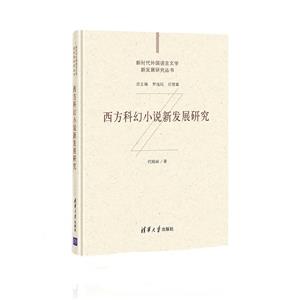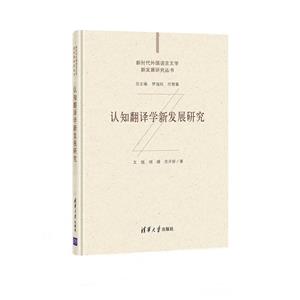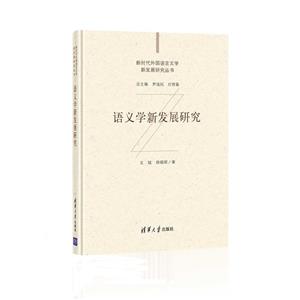
作者:张晓雯
页数:167
出版社:东南大学出版社
出版日期:2022
ISBN:9787576601671
电子书格式:pdf/epub/txt
内容简介
本书的主要内容基于Washio的强/弱动结式的理论,比较研究了英汉日语中的动结式结构,并从句法学视角解释汉语动结式结构与英语和日语动结式结构的相同点与异同点。此外,本书在研究汉语两种动结式结构时,基于Folli的三层语义构造理论,从一崭新视角定位了DE(得)在汉语动结式结构中的功能,即表示过程(Process)。根据上述两点,本书最后分析了汉语动结式Vtransitive-Vunaccusative式所产生的歧义现象,为对外汉语教学提供一定的借鉴与指导。
作者简介
张晓雯,博士、副教授,现为淮阴工学院大外部副主任,研究方向为比较语言学;先后主持完成了江苏省社会科学基金项目、江苏省教育厅高校哲学社会科学基金项目、江苏省社科联研究课题、淮安市社科类研究课题,发表学术论文十余篇,其中CSSCI来源期刊1篇,国外期刊8篇。
目录
Chapter 1 Resultative Constructions in English, Japanese and Chinese
1.1 Defining Resultatives and Resultative Constructions
1.1.1 English Resultative Constructions
1.1.2 Japanese Resultative Constructions
1.1.3 Chinese Resultative Constructions
1.2 Two Sharp Differences between Chinese Resultative Constructions
1.2.1 The Similarities between Chinese Two Types of Resultative Constructions
1.2.2 The First Sharp Difference between Chinese Resultative Constructions
1.2.3 The Possible Grammatical Weak V-DE-(NP)-A Construction in Chinese
1.2.4 The Second Sharp Difference between Chinese Resultative Constructions
1.3 Organization of the Book
Chapter 2 Chomsky’s General Framework and Works on Resultative Constructions
2.1 Chomsky’s General Framework in Syntax
2.1.1 Phrasal Structures
2.1.2 Theta Roles and the Deep Structures
2.1.3 Move
2.1.4 A Case Study in English
2.2 Foll’s Three-layer System and Lin’s Proposal
2.3 More on DE in V-DE-(NP)-A Construction: Previous Analyses
2.3.1 V-DE as a Phonological Word
2.3.2 DE as a Preposition
2.3.3 DE as a Derived Suffix
2.3.4 Zhu’s Proposal of DE as a Semantic Element [BECOME]
2.4 Stage-level Predicates and Individual-level Predicates
2.4.1 Kratzer’s Distinguishment of SLPs with ILPs by Event Argument
2.4.2 Zhang’s Division of Chinese Adjectives
2.5 Li’s Argument Structure Analysis
2.6 Li and Thompson’s Analysis
2.6.1 Serial Verb Constructions
2.6.2 The Syntactic Structures of Subject-oriented V-V-(NP) Compounds
2.7 Sybesma’s Small Clause Analysis
2.7.1 Sybesma’s Small Clause Analysis on Resultative V-V-(NP) Compounds
2.7.2 Sybesma’s Small Clause Analysis on V-DE-(NP)-V Constructions
2.8 Liang’s Analysis of Subject-oriented Resultative V-V-(NP) Compounds
Chapter 3 V-DE-(NP)-A Constructions in Chinese as Strong Resultatives
3.1 Strong and Weak Resultatives in Chinese Resultative Constructions
3.2 V-DE-(NP)-A Construction in Chinese as Strong Resultatives
3.2.1 The Syntactic Structures of Weak Resultatives in Chinese
3.2.2 The Syntactic Structures of Strong Resultatives in Chinese
Chapter 4 The Possibility of Grammatical Weak V-DE-(NP)-A Constructions
4.1 The Possibility of Grammatical Weak V-DE-(NP)-A: On the Occasion of ILP
4.2 The Possibility of Grammatical Weak V-DE-(NP )-A: On the Occasion of Degree Words
Chapter 5 The Subject-oriented and Object-oriented Interpretations in Chinese
5.1 The Subject-oriented and Object-oriented Interpretations in V-V-(NP) Compounds
5.2 The Object-oriented Interpretation in Chinese V-DE-(NP )-V Constructions
5.3 The Syntactic Structures of Subject-oriented and Object-oriented Interpretations
5.3.1 The Syntactic Structure of the Subject-oriented Resultative V-V-(NP) Compounds
5.3.2 The Syntactic Structures of the Object-oriented V-DE-(NP)-V Constructions
5.3.3 The Syntactic Structures of the Object-oriented Resultative V-V-(NP) Compounds
5.4 The Subject-oriented Interpretation in Japanese Resultative V-V compounds
Chapter 6 Conclusion
Bibiography
Acknowledgements
1.1 Defining Resultatives and Resultative Constructions
1.1.1 English Resultative Constructions
1.1.2 Japanese Resultative Constructions
1.1.3 Chinese Resultative Constructions
1.2 Two Sharp Differences between Chinese Resultative Constructions
1.2.1 The Similarities between Chinese Two Types of Resultative Constructions
1.2.2 The First Sharp Difference between Chinese Resultative Constructions
1.2.3 The Possible Grammatical Weak V-DE-(NP)-A Construction in Chinese
1.2.4 The Second Sharp Difference between Chinese Resultative Constructions
1.3 Organization of the Book
Chapter 2 Chomsky’s General Framework and Works on Resultative Constructions
2.1 Chomsky’s General Framework in Syntax
2.1.1 Phrasal Structures
2.1.2 Theta Roles and the Deep Structures
2.1.3 Move
2.1.4 A Case Study in English
2.2 Foll’s Three-layer System and Lin’s Proposal
2.3 More on DE in V-DE-(NP)-A Construction: Previous Analyses
2.3.1 V-DE as a Phonological Word
2.3.2 DE as a Preposition
2.3.3 DE as a Derived Suffix
2.3.4 Zhu’s Proposal of DE as a Semantic Element [BECOME]
2.4 Stage-level Predicates and Individual-level Predicates
2.4.1 Kratzer’s Distinguishment of SLPs with ILPs by Event Argument
2.4.2 Zhang’s Division of Chinese Adjectives
2.5 Li’s Argument Structure Analysis
2.6 Li and Thompson’s Analysis
2.6.1 Serial Verb Constructions
2.6.2 The Syntactic Structures of Subject-oriented V-V-(NP) Compounds
2.7 Sybesma’s Small Clause Analysis
2.7.1 Sybesma’s Small Clause Analysis on Resultative V-V-(NP) Compounds
2.7.2 Sybesma’s Small Clause Analysis on V-DE-(NP)-V Constructions
2.8 Liang’s Analysis of Subject-oriented Resultative V-V-(NP) Compounds
Chapter 3 V-DE-(NP)-A Constructions in Chinese as Strong Resultatives
3.1 Strong and Weak Resultatives in Chinese Resultative Constructions
3.2 V-DE-(NP)-A Construction in Chinese as Strong Resultatives
3.2.1 The Syntactic Structures of Weak Resultatives in Chinese
3.2.2 The Syntactic Structures of Strong Resultatives in Chinese
Chapter 4 The Possibility of Grammatical Weak V-DE-(NP)-A Constructions
4.1 The Possibility of Grammatical Weak V-DE-(NP)-A: On the Occasion of ILP
4.2 The Possibility of Grammatical Weak V-DE-(NP )-A: On the Occasion of Degree Words
Chapter 5 The Subject-oriented and Object-oriented Interpretations in Chinese
5.1 The Subject-oriented and Object-oriented Interpretations in V-V-(NP) Compounds
5.2 The Object-oriented Interpretation in Chinese V-DE-(NP )-V Constructions
5.3 The Syntactic Structures of Subject-oriented and Object-oriented Interpretations
5.3.1 The Syntactic Structure of the Subject-oriented Resultative V-V-(NP) Compounds
5.3.2 The Syntactic Structures of the Object-oriented V-DE-(NP)-V Constructions
5.3.3 The Syntactic Structures of the Object-oriented Resultative V-V-(NP) Compounds
5.4 The Subject-oriented Interpretation in Japanese Resultative V-V compounds
Chapter 6 Conclusion
Bibiography
Acknowledgements















